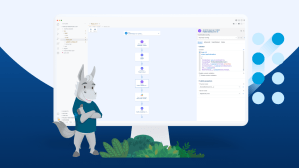Quick Take
Retailers in the U.S. closed out the quarter with a strong March as consumers increased spending in response to the American Rescue Plan Act.
Each quarter we take a pulse of retail activity that we are seeing on our platform. We first began tracking the surge in digital brought about by the pandemic with our 2020 Q1 Shopping Index as consumers shifted their shopping online last March and began to prioritize essential goods. With the release of our Q1 2020 Shopping Index, we’re seeing how the pandemic has helped usher in a new wave of digital shoppers that are here to stay.
By The Numbers
- Daily online spending in the U.S. peaked for Q1 on March 17, growing 117% year over year (YoY), coinciding with the official payment date for the first batch of stimulus checks distributed to approximately 90 million Americans
- Global digital revenue grew by 58% YoY globally in Q1, driven by a combination of overall online traffic growth (27%) and an increase in the amount of money spent by shoppers per site visit (31%)
- Digital revenue in the U.S. grew by 45% YoY in Q1, which is still well above pre-pandemic levels and slightly up from Q4 (43%)
- Product categories with the most growth in Q1 YoY:
- Sporting goods (101%)
- Home appliances (96%)
- Luxury handbags (95%)
- Product categories with the least growth in Q1 YoY:
- Active apparel (42%)
- Home, dining, art & decor (40%)
- General handbags & luggage (8%)
Why It Matters
With retailers and consumers moving online in response to the pandemic, Q1 data indicates that the habits formed over the course of the year and the 2020 holiday season are here to stay. As countries like the United States begin to reopen, retailers and businesses will need to rethink the role of the store (and store associates) and how it can serve as a critical component of the digital shopping experience in 2021.
Explore Further
On March 9, online shopping experienced a noticeable spike , just one day before the House passed the American Rescue Plan Act. Spending continued to increase immediately after the bill’s signing on March 10 and peaked on March 17 (117% YoY) as consumers began receiving their stimulus checks. There was another spike on March 24 (56% YoY) when the second wave of stimulus checks hit.
An analysis of spending between March 15th and March 19th that compared 2021 to 2020 revealed that the top growing categories were luxury handbags, active apparel and electronics and accessories.
Salesforce’s data shows that March 17 and 18 had the highest monthly discount rates at 19%, compared to the 17% average discount that retailed offers in March, indicating that retailers increased their marketing efforts to align with the timeline of the COVID-19 relief bill.
The Salesforce Perspective
“Retailers were forced to be scrappy last year as they reacted to an influx of new digital shoppers and embraced new tactics like curbside pickup to help keep consumers safe,” said Rob Garf, VP and GM, Retail at Salesforce. “The growth in digital commerce over the first quarter is a signal that retailers will need to continue to scale their investments in digital while refocusing the in-store experience. Ultimately, stores must offer a balance of contactless and immersive experiences to cater to the differing needs of consumers.”
More Information
Find more insights by exploring the interactive Shopping Index dashboard powered by Tableau.
Q1 Shopping Index Methodology
The Q1 Shopping Index uncovers the true shopping story through analyzing the activity of more than one billion shoppers across more than 40 countries powered by Commerce Cloud. Several factors are subsequently applied to extrapolate projections and actuals for the broader retail industry.
To qualify for inclusion in the analysis set, a digital commerce site must have transacted throughout the analysis period, in this case Q1 2019 through Q1, 2021, and meet a monthly minimum visit threshold. Additional data hygiene factors are applied to help ensure consistent metric calculation.
The Shopping Index is not indicative of the operational performance of Salesforce or its reported financial metrics including GMV growth and comparable customer GMV growth.




















